Choosing Adventure Bike Tyres
Choosing what adventure tyre to fit can be a daunting task due to the number of options on the market and the mixed reviews on the internet. However, a good starting point is understanding the percentage rating system by which tyres are rated. The four main rating categories that apply to adventure riding tyres are:
90% Street - 10% Dirt
The 90/10 tyres are ideal for riders that spend the majority of their time on tarmac roads with only a small portion of their time on gravel roads. They are generally road oriented tyres with an ever so slightly beefed up tread pattern and casing to handle occasional gravel road and mild off-road use. These tyres are perfect for exploring tarmac roads and occasionally poking your nose down an interesting gravel road or dirt track.
The limitations of these tyres will reveal themselves if you try to push the limits. Almost no grip is offered in sand or deep gravel, or on terrain that is muddy, greasy or steep and loose. These tyres are great, but only for what they were intended for.
Generally these types of tyres are fitted to larger bikes such as BMW, Triumph, Ducati etc with the intent for road adventure touring. The longevity of these tyres is great due to the characteristics and compounds being so similar to street tyres.
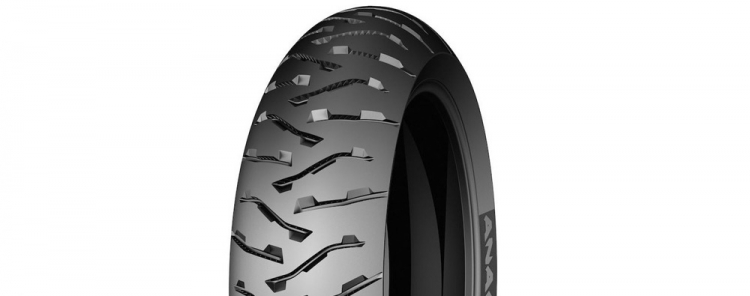
50% Street - 50% Dirt
This is a very popular category of adventure tyre for adventure riding worldwide. There are a huge number of tyres in this category offering great versatility for riders that spend an almost equal amount of time on and off-road. These tyres offer great on road manners for exploring tarmac roads plus they offer the ability to successfully tackle gravel roads and off-road terrain.
You'll see 50/50 tyres fitted to anything from lightweight adventure bikes right through to large touring bikes. The longevity of these tyres vary between manufacturers but is generally fairly good. They will never last as long as the more road oriented 90-10 tyres however they will last significantly longer than the more dirt oriented 30/70 or 10/90 tyres.
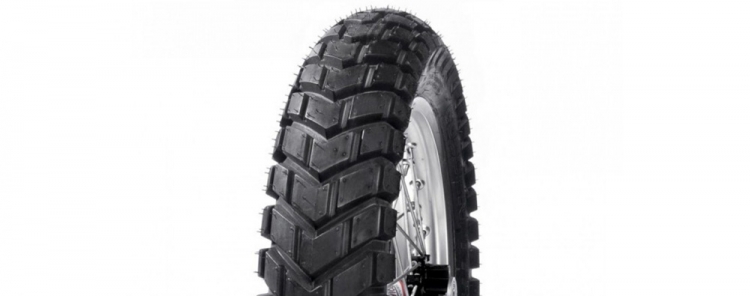
30% Street - 70% Dirt
This is a popular category for the more adventurous adventure rider. Generally the road manners are friendly enough to enjoy the tarmac stretches plus the traction they offer off-road gives you the ability to tackle the more remote and technical routes.
There are a high number of different tread patterns produced by different manufacturers. Many of these 30/70 tyres have what is known as a large block pattern. These large block pattern tyres are similar to many off-road tyres but the knobs (blocks) are larger therefore provide more contact area which results in better road manners and increased longevity.
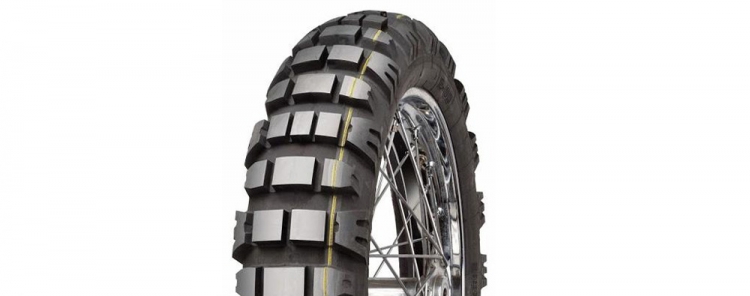
10% Street - 90% Dirt
The 10/90 tyres cater for riders that primarily ride off-road terrain and that want the best off-road performance. Many of these tyres are simply road compliant off-road tyres and in recent years enduro tyres have become a very popular option. With enduro events forcing riders to ride short sections of public roadways this has meant enduro regulations have forced most enduro tyres to become road compliant. This is a fantastic outcome for adventure riders as this means we have a wide selection of road compliant competition tyres that have advanced tread patterns, strong casings and excellent performance.
Most 10-90 tyres aren't that pleasant to ride on tarmac roads however riders that fit these tyres don't really have tarmac in mind. Normally the goal is to only ride tarmac where it is unavoidable in order to reach the off-road sections.
Generally these types of tyres are fitted to lightweight adventure/enduro bikes. The longevity of these tyres is normally very low with many only lasting a handful of days before they need to be replaced. Tarmac riding will dramatically wear out 10/90 tyres. The goal here isn’t longevity, it's performance.
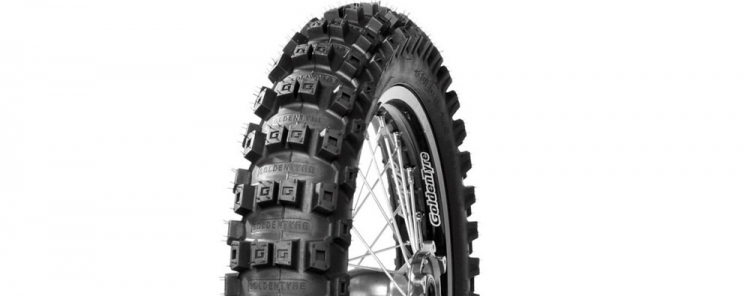
A Note on the Tyre Percentage Rating System
Aside from the four ratings above, there are others. Some tyre manufacturers have ratings such as 80/20, 75/25, 60/40 and so on. Additionally, you may encounter some riders with different opinions. One rider may say a Mitas E09 is a 50/50 while another rider may consider it a 30/70. Generally however, this percentage based system is reasonably consistent worldwide and is a good way to rate and match adventure tyres.
Matching the Best Adventure Tyre
Many riders will have their own take on how to match adventure tyres. Some will match a tyre to a rider. Some will match a tyre to a bike. My preference is to match the tyre to the most technical terrain on each ride. For example, if my route includes tarmac, gravel roads, dirt tracks, and technical off-road sections; I aim to match the tyre to the technical off-road sections. While this will result in fitting a more off-road oriented tyre that will naturally have a quicker wear rate, it will mean that when I reach the technical off-road sections, I'll have a tyre that offers the best performance and grip.
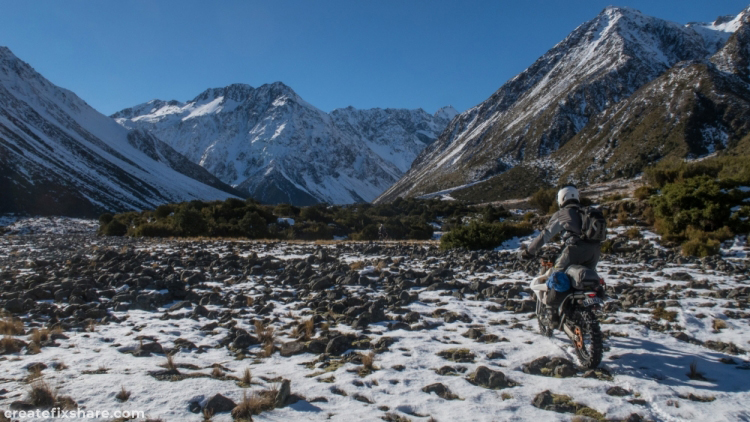
Riding in off-road terrain with a tyre that is too road oriented is a sure-fire recipe for tyre washouts. This normally ends badly with either damage to the bike, damage to you, or both. The more remote your riding location is, the more challenging it becomes to deal with a damaged bike or a damaged rider.
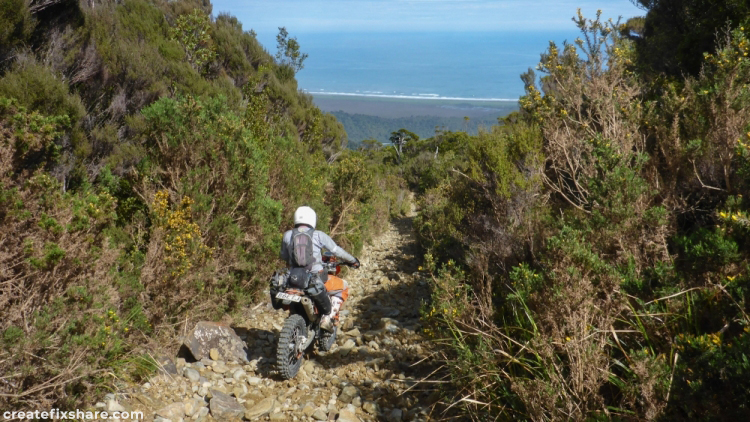
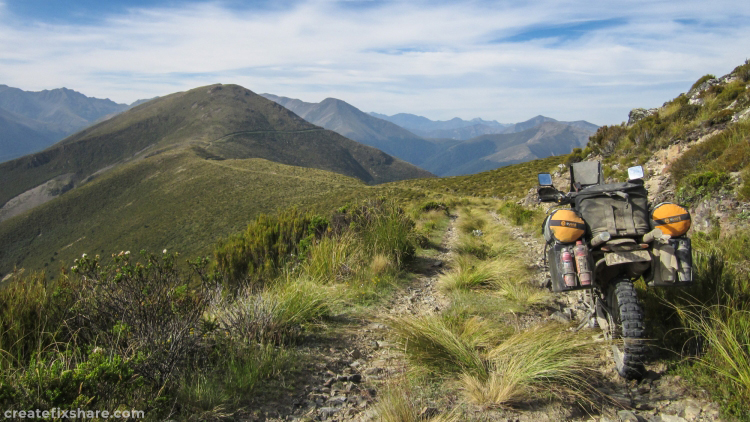
Many seasoned adventure riders will refuse to ride with other riders that have worn tyres, or tyres that are not matched to the planned terrain. This may seem a little rough but if you have ever experienced the challenges of dealing with an injured rider in a remote location, you will well and truly understand it is good practice to avoid a potential disaster.
While keeping your bike shoed with good quality tyres that are correctly matched to the intended riding terrain can be fairly costly, instead of looking at just the cost of a tyre, look at the cost (and pain) of a broken collarbone or some other injury caused by worn or poorly suited tyres. Ask yourself, what is the cost of 3 months off work? Aside from the safety factor, riding with a fresh set of tyres suited to the terrain you are riding will give you exceptional grip, make your bike handle better and make riding so much more fun.